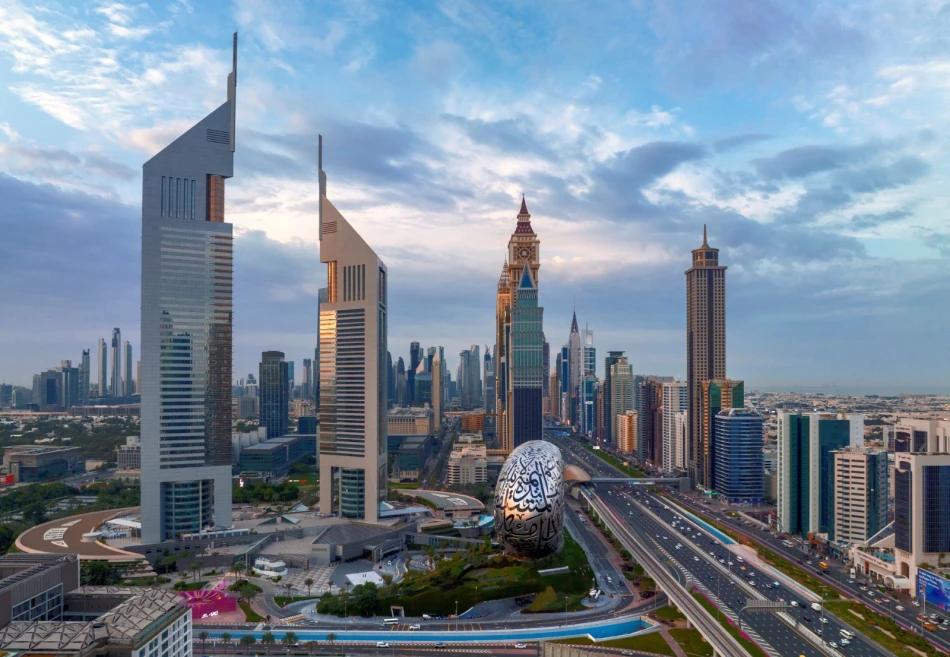
Partly Cloudy Skies and Chance of Showers Forecast for Tomorrow
UAE Braces for Afternoon Thunderstorms as Summer Heat Intensifies Across Emirates
The UAE's National Center of Meteorology has forecast partly cloudy to overcast conditions for tomorrow, with cumulus cloud formation expected in eastern and southern regions during afternoon hours, potentially bringing rainfall to areas that have experienced prolonged dry conditions. The weather pattern reflects typical summer dynamics in the Arabian Peninsula, where intense daytime heating creates unstable atmospheric conditions.
Wind and Dust Activity Expected During Peak Hours
Meteorologists predict light to moderate winds that will intensify during daytime hours, stirring up dust particles across the region. The wind pattern will shift from southeasterly to northeasterly directions, with speeds ranging from 10-25 km/h and gusting up to 35 km/h during peak activity periods.
This wind pattern is characteristic of the region's summer monsoon influence, where thermal differences between land and sea create pressure gradients that drive afternoon wind acceleration. For residents and businesses, this means reduced visibility during midday hours, particularly affecting outdoor activities and transportation.
Coastal Conditions Remain Favorable
Both the Arabian Gulf and Sea of Oman will experience light wave conditions, providing favorable circumstances for maritime activities. In the Arabian Gulf, high tide is scheduled for 21:18, with low tide occurring at 05:36. The Sea of Oman will see its primary high tide at 17:46 and secondary high tide at 08:22, with low tides at 12:41 and 01:09 respectively.
Regional Temperature Variations Highlight Geographic Diversity
Temperature forecasts reveal significant variations across the Emirates, reflecting the country's diverse topography and coastal influences. Liwa is expected to record the highest temperature at 47°C, while Fujairah on the eastern coast will experience more moderate conditions with a maximum of 34°C.
The temperature differential of 13 degrees between inland and coastal areas demonstrates the moderating influence of maritime proximity. Abu Dhabi and Dubai, the country's economic centers, will see maximums of 45°C and 44°C respectively, with humidity levels varying dramatically from 20% to 70%.
Humidity Patterns Signal Seasonal Transition
Humidity readings across the Emirates show considerable variation, with coastal areas like Fujairah reaching 90% maximum humidity, while inland regions such as Al Ain will experience drier conditions at 40% maximum humidity. This pattern aligns with the region's summer climate characteristics, where coastal areas benefit from maritime moisture while interior regions face more arid conditions.
For residents and visitors, these humidity variations translate into different comfort levels and health considerations. The combination of high temperatures and elevated humidity in coastal areas creates higher heat index values, making outdoor activities more challenging during peak hours.
Economic and Operational Implications
The forecast conditions have practical implications for various sectors. Construction and outdoor work schedules may require adjustment during peak heat hours, while the aviation sector will monitor dust levels for visibility impacts. The tourism industry, particularly outdoor attractions and beach activities, will benefit from the light wave conditions despite challenging terrestrial weather.
Agricultural operations in the eastern regions may welcome potential rainfall, though the brief nature of afternoon thunderstorms typically provides limited irrigation value. Water management authorities will monitor any precipitation for potential flash flooding in urban areas with limited drainage infrastructure.
 Sara Khaled
Sara Khaled







